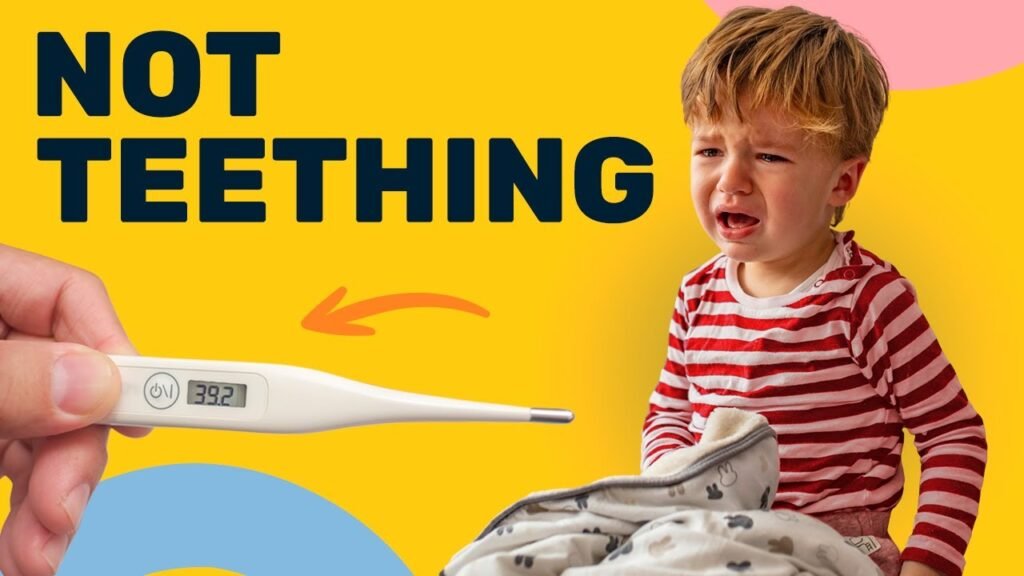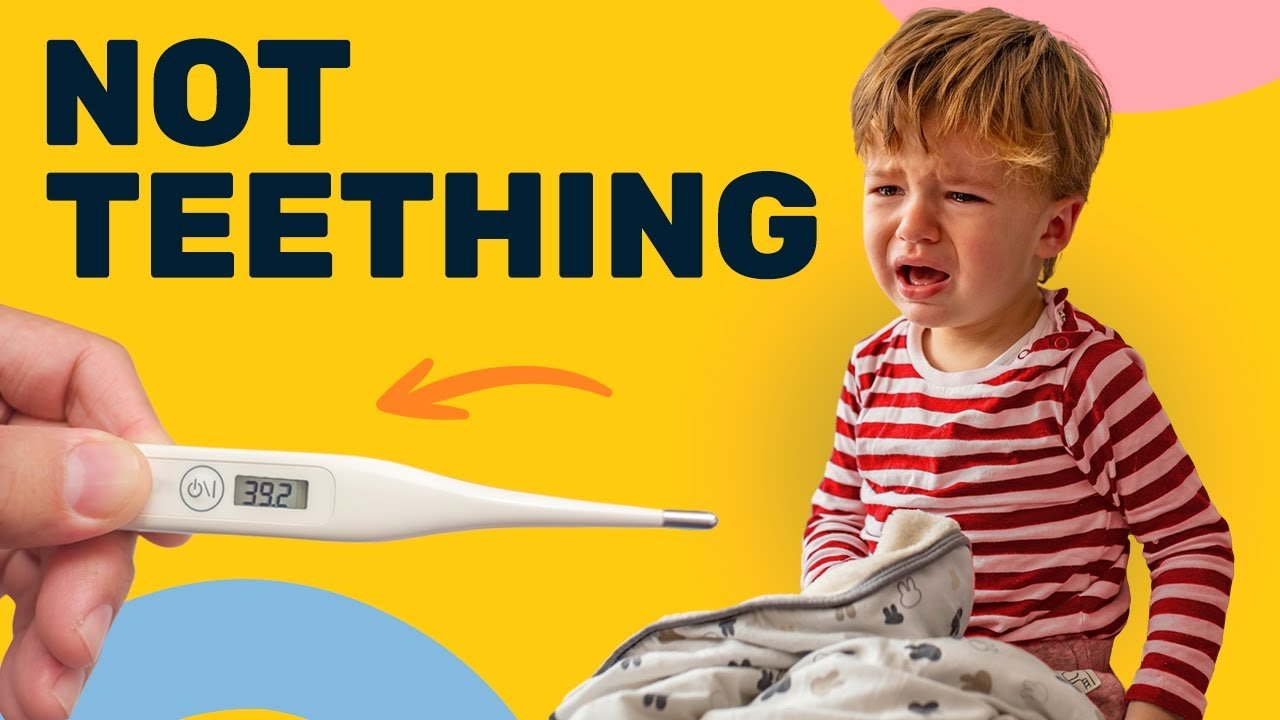You might have heard that teething can cause fevers, diarrhea, and runny noses, but in reality, these symptoms are not directly linked to teething. It’s important to understand the common teething myths and avoid falling into the trap of believing them. By dispelling these myths, you can make the teething process easier for both you and your baby, while also ensuring their safety and well-being. Remember to seek advice from a healthcare professional if you have any concerns about your child’s health.
Teething gels and numbing agents may not be as safe as they seem, as they can potentially cause harm to your baby if used incorrectly. Additionally, teething necklaces and bracelets can pose choking and strangulation hazards. By being informed about the myths surrounding teething and understanding the risks associated with certain teething products, you can navigate the teething phase with confidence and keep your little one safe and comfortable.

Myth #1
Teething does not cause fevers, diarrhea, or runny noses. Many people believe that these symptoms are indicative of a teething baby, but research has shown otherwise. While there may be a slight increase in body temperature during teething, it does not lead to fevers. If your baby has a fever above 100.4 degrees Fahrenheit or 38 degrees Celsius, it likely indicates an illness or infection rather than teething. Proven symptoms of teething include swollen gum tissue and gum pain. Additionally, an eruption cyst, a blue-green bubble that appears on the gum before a tooth emerges, is a common sign of teething. Babies experiencing teething may also drool more, leading to potential dribble rash. It’s essential to differentiate between teething symptoms and signs of illness to ensure appropriate medical attention is sought when needed.
Myth #2
Baby’s teeth do not move up and down in the gum. Once a baby’s tooth erupts, it does not retract back into the gum. It may appear as if the tooth is moving up and down due to localized swelling around the emerging tooth. This swelling can give the illusion of movement, but as it resolves, the tooth’s crown becomes more visible. Understanding this process can help parents recognize the stages of tooth eruption and differentiate normal teething progression from other dental concerns.
Myth #3
Teeth arrive in a specific sequence for babies. Contrary to popular belief, baby teeth generally follow a set order when emerging. The typical sequence includes central incisors, lateral incisors, first molars, canine teeth, and second molars. Although deviations from this sequence are not uncommon, knowing the expected order can help parents identify teething signs and monitor their baby’s dental development. By recognizing the typical progression of tooth eruption, caregivers can provide appropriate support and relief during the teething process.
Myth #4
Teething gels should not be used. While teething gels are marketed as pain-relieving solutions for teething babies, they come with potential risks. These gels are often ineffective due to increased saliva production in teething infants, causing the medication to wash out quickly or be swallowed. Ingesting teething gels can lead to numbness in the back of the throat, compromising swallowing function. Moreover, the numbing agents in these gels, such as lidocaine and benzocaine, have been associated with severe injuries when consumed excessively. It is crucial for parents to avoid using teething gels and seek safer alternatives for managing their baby’s teething discomfort.
Myth #5
Teething necklaces and bracelets are not effective or safe. While some parents may believe that teething accessories like necklaces and bracelets provide relief for teething babies, there is no substantial evidence to support this claim. Furthermore, these products pose significant hazards, including choking and strangulation risks for infants. It’s essential to prioritize safety when choosing teething remedies and opt for proven methods of teething relief. Avoiding potentially harmful products like teething necklaces and bracelets can prevent accidents and ensure the well-being of your baby during the teething process.
Avoid Harmful Teething Tips
To safeguard your baby’s health and well-being during teething, it is important to steer clear of harmful teething tips. Never use teething gels or numbing agents, as they can pose risks and are often ineffective in providing relief. Avoid teething necklaces and bracelets, which can be dangerous and do not offer proven benefits for teething babies. Instead, seek safer alternatives for teething relief that prioritize your baby’s safety and comfort.
Healthy Teething Relief Strategies
There are various safe and effective teething relief strategies that parents can implement to support their baby during the teething process. Using chilled teething rings or washcloths can help soothe gum discomfort and provide relief for teething infants. Massaging your baby’s gums with clean fingers can also alleviate teething pain and promote comfort. Additionally, offering safe teething toys or teethers for your baby to chew on can distract them and help alleviate teething-related discomfort. By incorporating these healthy teething relief strategies into your baby’s routine, you can ensure they receive adequate support during this developmental stage.
Consulting Healthcare Professionals
It is always advisable to consult healthcare professionals when dealing with concerns related to your baby’s teething symptoms. If you notice any unusual or persistent signs of discomfort in your baby, seek advice from medical professionals to rule out potential illnesses or infections. Delaying medical attention for suspected health issues can lead to complications and should be avoided. Refrain from self-diagnosing teething-related problems and rely on the expertise of healthcare providers to ensure accurate guidance and appropriate care for your baby.
Creating a Safe Teething Environment
To create a safe teething environment for your baby, it is essential to consider the safety of teething toys and products. Ensure that teething toys are age-appropriate and free from any potential choking hazards. Regularly inspect teething toys for signs of wear or damage and replace them as needed to prevent accidents. Supervise your baby when using teething toys to minimize the risk of injuries or mishaps. By establishing a secure teething environment and choosing safe teething products, you can protect your baby from harm and promote a positive teething experience.
Conclusion
Dispelling common teething myths can empower parents to provide better care for their babies during the teething process. By understanding the truths behind teething symptoms and treatments, caregivers can navigate this developmental stage with confidence and accuracy. Prioritizing safety and well-being over outdated beliefs is crucial for ensuring the health and comfort of teething infants. Remember to seek advice from healthcare professionals for reliable guidance and support throughout your baby’s teething journey. By dispelling teething myths, adopting healthy teething relief strategies, and creating a safe teething environment, parents can help their babies navigate teething with ease and comfort.

